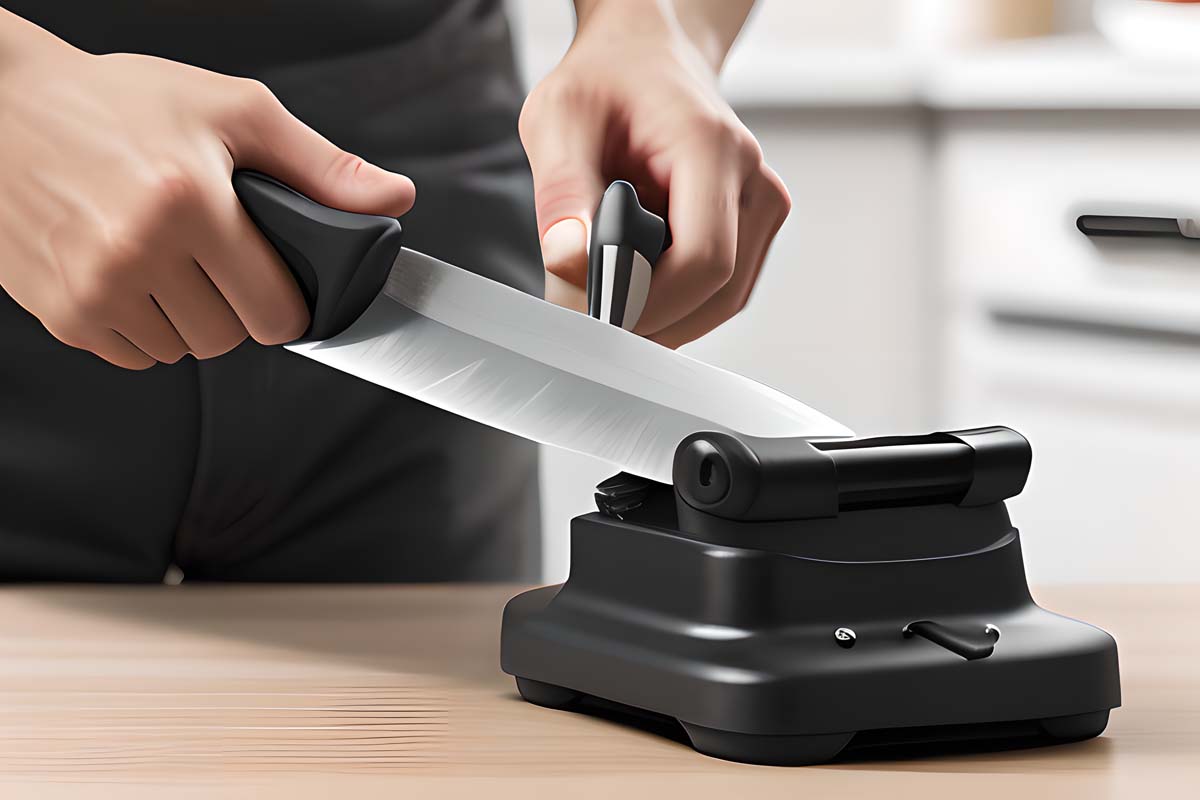A dull knife can turn even the simplest kitchen task into a frustrating chore. As kitchen enthusiasts and professional chefs alike can attest, a sharp knife is an essential tool for efficient and precise cooking. However, finding the right knife sharpener can be a daunting task in itself. With a plethora of options available, it can be difficult to determine which one is best suited for your needs.
If you’re looking for the best knife sharpeners on the market, you’ve come to the right place. In this blog, we will explore the top knife sharpeners available in NZ, highlighting their features, performance, and overall value for money. Whether you’re a home cook or a professional chef, this guide will help you choose the perfect knife sharpener to keep your blades razor-sharp and ready for any culinary challenge.
Table of Contents
How to Choose the Best Knife Sharpener for You
Choosing the best knife sharpener requires careful consideration of various factors to ensure you pick a tool that suits your needs and preferences. A sharp knife is not only more efficient and safer to use but also extends the lifespan of your knives. Here’s an in-depth guide to help you make an informed decision.
What types of knife sharpeners are there?
There are various types of knife sharpeners available to suit different preferences and levels of expertise. Here are some of the most common types:
Sharpening Rod or Honing Steel: A honing steel, also known as a sharpening rod or honing rod, is a long, cylindrical rod made of steel or ceramic. It is primarily used for realigning and maintaining the edge of a knife between sharpening sessions. Contrary to popular belief, a honing steel does not actually sharpen the blade by removing metal. Instead, it straightens and aligns the microscopic teeth along the edge, helping the knife maintain its sharpness. Honing rods are best used for fine-tuning and keeping knives in peak condition.
Whetstone (Sharpening Stone): Whetstones, also referred to as sharpening stones or water stones, are traditional sharpening tools that have been used for centuries. These stones are available in various grit levels, ranging from coarse to fine. To use a whetstone, you wet the stone and then move the knife’s edge along the surface in a controlled manner, abrading away the metal to sharpen the blade. Whetstones offer precision and control, but they require practice to achieve consistent results.
V-Sharpener (Pull-Through Sharpener): It is also known as pull-through sharpeners, are simple and user-friendly tools that consist of two slots with abrasive materials set at a fixed angle. You pull the knife through these slots, and the abrasive material removes a small amount of metal from each side of the blade, sharpening it. These sharpeners are quick and convenient, but they may remove more metal than necessary and are not suitable for all knife types.
Electric Sharpeners: These sharpeners are motorized devices equipped with grinding wheels or belts that automate the sharpening process. They often offer preset angle guides and multiple stages of sharpening, including coarse, fine, and polishing stages. Electric sharpeners are suitable for individuals who want fast and consistent results without the need for manual skill. However, some models might be aggressive on delicate knives or require more maintenance.
Guided Sharpening Systems: Guided sharpening systems combine the benefits of manual and electric sharpeners. They usually consist of a clamp or guide that holds the knife at a consistent angle while you move it across abrasive surfaces like diamond plates or whetstones. These systems provide more control over the sharpening angle and are particularly useful for beginners.
What other things need to be looked for?
Angle Adjustability: Different knives have different blade angles for optimal sharpness. Some sharpeners offer adjustable angles to accommodate various blade types, ensuring you achieve the best edge for your knives.
Material Quality: For sharpening stones, consider the material (e.g., diamond, ceramic, water stones). Each has its advantages and disadvantages in terms of abrasiveness, durability, and maintenance requirements. Electric sharpeners should have high-quality abrasive wheels that won’t damage the blade or remove excessive material.
Knife Types: Consider the types of knives you frequently use. Some sharpeners might be better suited for specific blade styles (e.g., straight-edge, serrated). Serrated knives require specialized sharpeners with a design that matches the serration pattern.
Skill Level: Manual sharpeners often require more skill and practice to achieve consistent results. Electric sharpeners can be more user-friendly, but they might have limitations in terms of sharpening technique.
READ NEXT: Best Air Fryers | Kitchen Scales | Kitchen Knives
The Best Knife Sharpeners NZ
1. Knife Sharpener 3-Step
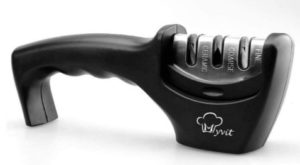
This Knife Sharpener is a versatile and user-friendly tool designed to restore the sharpness of a variety of blades. Its features aim to provide a safe and effective sharpening experience.
This sharpener employs a 3-step sharpening process that helps restore the sharpness of blades efficiently. Each step is designed to progressively refine the edge, providing incredible sharpening performance.
2. Scanpan Black Mouse Sharpener
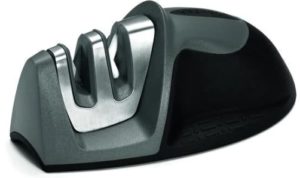
The Scanpan Black Mouse Sharpener impresses with its tungsten and ceramic stone construction. Its ergonomic design ensures comfortable use, while the blade safety guard adds peace of mind. A reliable tool for maintaining sharp edges on various blades.
3. Kasumi Diamond Sharpener
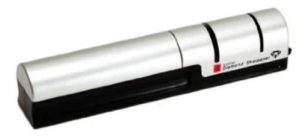
The Kasumi Diamond Sharpener stands out with its V Gold No. 10 high carbon stainless steel composition. The unique Kasumi pattern on both sides of the knives adds elegance. Its robust black laminated wooden handles provide a comfortable grip. A premium choice for those seeking both sharpness and aesthetics in their knives.
4. Global G-74 Ceramic Sharpener

This Global G-74 Ceramic Sharpener complements the excellence of Global knives. Crafted with Cromova 18 stainless steel, these knives are hand-forged and ice-tempered by Japanese artisans. Their remarkable edge retention and perfect balance, akin to Samurai Swords, make them essential for home kitchens to high-end restaurants.
5. Kasumi Multiple Sharpener
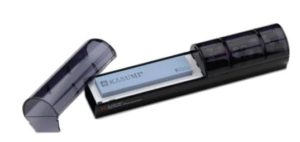
The Kasumi Multiple Sharpener perfectly complements the exceptional quality of Kasumi knives. Crafted with precision from V gold No. 10 high carbon stainless steel, the knives offer remarkable sharpness. Their Rockwell hardness of C59-60 ensures a lasting cutting edge. The elegant damascus stainless steel pattern, achieved through meticulous folding and forging, adds a unique touch. Skilled craftsmanship and black laminated wooden handles enhance the knives’ grace and strength.
FAQs
What’s the difference between honing and sharpening?
Honing realigns the blade’s edge, enhancing its straightness and sharpness. Sharpening involves removing material to create a new edge. While honing maintains the edge between sharpenings, sharpening is a more aggressive process for restoring a dulled blade’s sharpness.
What do professionals use to sharpen knives?
Professionals often use high-quality sharpening stones, honing rods, and guided sharpening systems to maintain and restore the sharpness of their knives. These tools offer precision and control for achieving optimal edge quality.
What is the best tool to sharpen a knife?
The best tool to sharpen a knife depends on your skill level and preference. For beginners, a pull-through sharpener is user-friendly. Enthusiasts might prefer sharpening stones for precision. Electric sharpeners offer convenience while honing rods maintain edges. Choose based on your needs.
